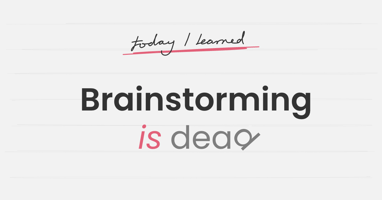Research shows that five barriers impede consumer goods companies from generating more high-value ideas to put into their product pipelines. Below are those barriers, along with suggestions for how to overcome them.
Business silos stymie the development of ideas.
Sixty-two percent of the participants in a recent survey of consumer goods manufacturers indicated their number-one challenge at the front end of the innovation process is that “ideas are not broadly visible and therefore can't be reused by others.” This problem is often rooted in functional and geographical silos that hinder communication related to developing new ideas.
To overcome this barrier, companies can create cross-functional communities that encourage interaction. For example, companies can organize communities-of-practice around target consumer segments or consumer trends about which the organization wants to encourage discussion and knowledge-sharing (e.g., “restaurant-quality dining experiences in the home”).
Ideas do not transition to concept development and execution, and end up in a black hole.
In the same survey, the number-two challenge was that “good ideas ‘get stuck' and don't move forward into development.” When employees see nothing happening around their ideas, they become demotivated and lose interest in contributing to the ideation process.
Companies can overcome this barrier by enabling connections between concept development, screening and execution. For example, they can track submitted ideas and connect them to market research studies during the screening phase. Then, they can implement scorecards and a gated development process to move the best ideas to execution.
Inconsistent processes for managing ideas cause inconsistent prioritization.
Most companies do not have consistent methods for facilitating idea generation. In many instances, each region, brand, or business unit does it differently. And even within those organizational groups themselves, it is not uncommon to find a lack of process consistency.
To solve this problem, develop a rigorous idea development process that encourages building upon and refining ideas and linking them to similar ideas. During concept development and screening, encourage iteration and link internal company knowledge to external, third-party research data (such as from Nielsen and IRI). Finally, use a stage-gate process to move ideas from development to execution. Apply financial measures as well as market, technical and supply chain assessments to identify the highest-value ideas that merit investment and rollout.
There's no way to identify connections between ideas, or between people.
Another hindrance to effective idea development is a lack of linkage between people to other ideas, people, and knowledge sources that may be relevant to the idea they are bringing forward. To overcome this, make idea-submitters aware of related ideas and expertise that might be leveraged. For example, relevant subject matter experts can be called upon, even if they reside in different regions, brands, or consumer segments.
Ideas are unrelated to business strategy.
Too often, the ideas generated are out of step with the strategic direction of the organization. This issue is prevalent among companies that simply launch idea generation programs and leave it up to the employees to figure out what kinds of ideas are needed.
To overcome this, align ideation to strategy. Idea generation should be directly linked to defined strategic priorities so that incoming ideas will be a good fit with identified market opportunities, product and technology plans, and corporate growth strategies. For example, if the company has identified new consumer segments of the market where it wants to drive growth, it can launch idea challenges that target specific consumer needs within that segment. These targeted challenges focus employees' efforts on ideas that will address those specific needs.




